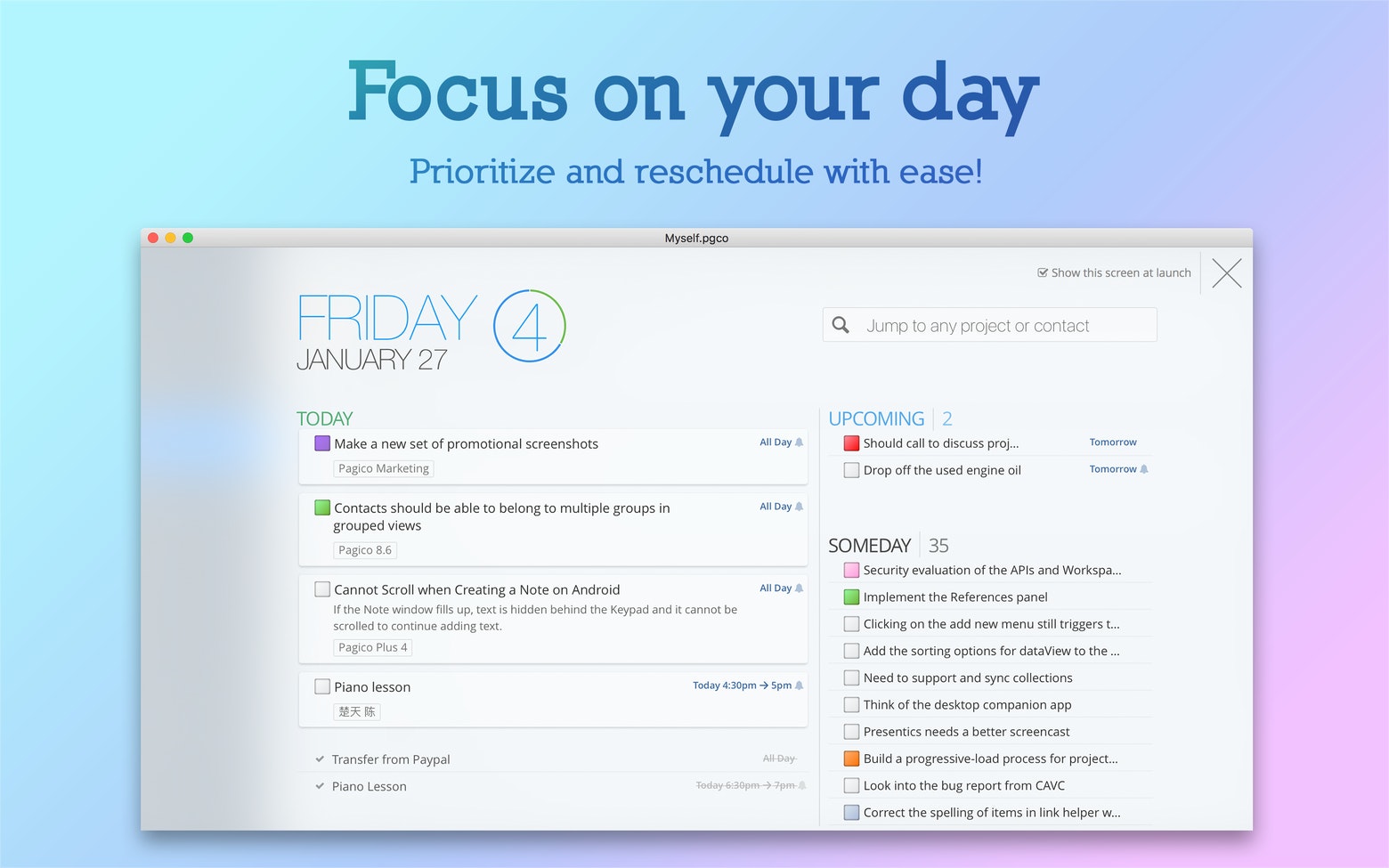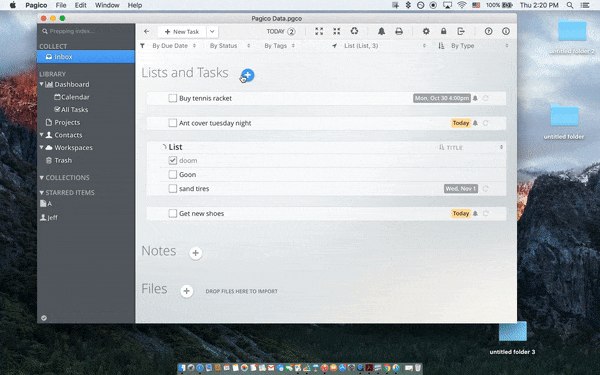

Pagico supports a wide variety of file formats, from the usual suspects (Pages, Numbers, Keynote, Word, Excel, PowerPoint) to Adobe, Photoshop, Scrivener, OmniOutliner and OmniGraffle files. The Pagico project view in the desktop app. They can be collapsed or hidden and individual tasks can be reordered by drag and drop within a list, or dragged to another list within the same project. Lists in Pagico are containers of tasks, which can be colour-coded by the user, as in the screenshot. To add notes, lists or files to your project you can click one of the ‘plus’ signs on the page, the helper app in the menu bar or use a keyboard shortcut to bring up a quick entry screen. I have set up a sample project based on setting up a small consulting business in Australia (see screenshot). Type a project title and press ‘enter’ and you are up and running.
#Pagico subtasks professional
See the Pagico website for further information about pricing structure and storage limits.ĭisclosure: the developers have provided me with a free version of the Pagico Professional Edition for purposes of this review. Individual users can avoid this one-time charge by purchasing the iPad app, which provides you with a free workspace. At the time of writing, a shared workspace for a six-person team cost $4.99 per month this scales up to $49.99 per month for a 24-person team. A personal workspace that can be shared between three users costs $20. The team leader then creates a shared workspace for the team. Using Pagico for team collaboration requires all participants to have the app installed.
#Pagico subtasks plus
For this review I have used the Pagico professional version 5.3 on an iMac running Mountain Lion and Pagico Plus 2 ($6.99) on an iPad 2. The iPhone version of Pagico Plus 2 will launch on 28 November 2012 and sell for $9.99. Be sure to check back here to read my follow-up review of the iPhone app. The mobile versions are called Pagico Plus. A licence for additional computers costs $5. The Pagico desktop app comes in three versions: people ($20), planner ($30) and professional ($50), with the website providing a clear overview of the respective features. That is not to say, however, that Pagico is derivative it has its own intrinsic logic and is an original, versatile and beautifully executed app, particularly on the iPad and the iPhone versions.

Pagico at times feels like a mix of IQTELL, OneNote, MS-Project and KanbanFlow. Pagico has some unusual features: it lets you manually rearrange your tasks on a ‘dashboard’ that looks like a Gantt chart and it can turn your project steps into a slideshow.

It took me a while to find my way around the app and how workspaces can be configured, but it was worth the effort. It is rich in features yet also somewhat idiosyncratic. Pagico is a desktop app that has been around since 2007. It supports individual planning as well as team collaboration and is available for Mac, Windows, Ubuntu, iPhone and iPad.

The developers describe their product as ‘a comprehensive planner that manages notes, tasks, files, projects and contacts’. Pagico is the handiwork of a small development team based in Japan. The odd bon mot from the irrepressible Stephen Fry or, in this case, stumbling upon a little productivity gem. Every now and then, good things can come from checking your Twitter account.


 0 kommentar(er)
0 kommentar(er)
